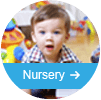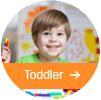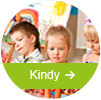What Are the Classic Childhood Diseases?
Childhood diseases: Anyone over about 50 years of age, will have grown up in a world where it was presumed children would be likely to catch one or more of several ‘normal’ but highly unpleasant and sometimes dangerous diseases such as measles, German measles and mumps etc.
Classic Childhood Diseases: Overview
Fortunately, most of these childhood diseases in Western societies have since largely been eliminated through vaccination programmes and lifestyle changes.
However, present-day parents need to be on their guard against a range of more minor ailments that may still be distressing for children.
Impetigo
This is a bacterial infection that affects the outer skin layers and is a very common childhood disease.
It’s usually manifest by brown scabby outbreaks on various parts of the body though sometimes bullous (blister-like eruptions) might also be seen.
The scabs may be sore or irritating. It’s not usually accompanied by other symptoms such as a fever but children may become distressed at their appearance in the mirror etc.
The condition is typically highly contagious and subject to your doctor’s advice, it’s usually necessary to keep your child out of school or day care centre for a period of time. Treatment usually involves antibiotic creams or possibly tablets and good hygiene practices around the home are essential.
Conjunctivitis
This term actually describes two separate conditions both of which may have the same symptoms. Those usually involve red, swollen and irritated eyes and eyelids plus in some cases, a sticky discharge from the eyes.
The first cause is allergy-related. The solution is usually based on testing to find out what your child’s eyes are reacting to. Some soothing medications may help to reduce inflammation and irritation. This is not infectious.
The second cause is bacterial or virological infection. Your doctor will prescribe treatments based on a specific causal diagnosis.
Where this problem is caused by a virus or bacteria, the disease is probably going to be infectious and hygiene precautions will be required – including possibly needing to keep your child out of school.
Serious longer-term side effects are moderately rare where prompt diagnosis and treatment are undertaken.
Head lice
An ancient affliction, these small parasites can plague people and be particularly commonplace in younger children.
The lice live in the hair and fix their eggs (called “nits”) to individual hairs. The effects are usually an itchy head and constant scratching which can lead to scalp damage and bleeding etc.
Most schools will have some form of ‘lice alert’ to notify parents that a case or cases have been detected in the school. That usually means preventative hair washing with special shampoos and checking for nits using a special nit comb.
Contrary to some ancient but still popular myth, catching lice does not mean you or your child have dirty hair. Lice actually prefer clean hair and their presence is entirely unrelated to personal hygiene.
If your child does become infected, don’t panic! Treatment is usually home-based and consists of the above-mentioned special shampoos and regular combing to remove the nits.
Worms
There are several types of worms that will make their home in the stomach of a human being if they can.
Infection is usually through eating products that contain worm eggs or sometimes due to poor hygiene such as when handling food after gardening and without washing hands. In some cases, infection can also arise when meat or fish-based products have been consumed raw or insufficiently cooked.
The symptoms in children may be so mild as to be unnoticeable or the child may be entirely asymptomatic. In many cases though, diarrhoea, irritation around the anus, abdominal pain and possibly a fever, might be present.
It’s very unusual for infections to be serious or cause for concern, though there may be some rare exceptions. Treatment usually consists of medication to kill the parasite.
Asthma
For reasons that are unclear, across the globe asthma rates are increasing. This is often speculated to be due to pollution but the case remains unproven and it may be simply that today we’re simply better at recognising and diagnosing this condition.
A child suffering from asthma most typically wheezes for much of the time when breathing, with this usually being worse at night or when laying down at other times.
They may find it difficult to breathe without feeling they are struggling to do so, although the condition might also arrive in ‘attacks’ whereby your child is fine one moment and then struggling to breathe the next. That might be visible when a child is breathing normally but becomes rapidly out of breath and gasping when running around in sports etc.
Asthma may vary in severity between children, with some having only minor attacks and others severe. The same is also true where the frequency of attacks is concerned. Some childhood asthma seems to spontaneously resolve and disappear after puberty.
Attacks may be potentially very serious and asthma should always be diagnosed by a doctor and a preventative treatment regime started as soon as possible. If your child is ever wheezing badly and struggling for breath, you should always seek medical assistance.
Asthma can, in most cases, be controlled via prophylactic treatments usually involving two inhalers – one for immediate relief of the symptoms and the other for longer-term steroid preventative applications. Many children with asthma can, with medical treatment, lead a perfectly normal life.













